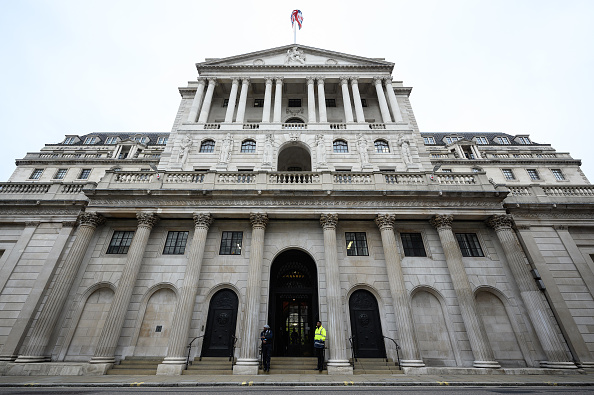Which direction will the UK’s economic weather vane blow in 2022?

It’s fair to say the last two years have been a turbulent one for the UK economy.
The pandemic has upended working practices, supply chains and the monetary policy playbook.
With the emergence of the Omicron variant leaving the spectre of coronavirus hanging over the country, it’s fair to say the British economy is not out of the woods yet.
Here’s four potential economic scenarios that could play out in 2022.
Inflation will near seven per cent
A collective sound of wincing was heard across the UK just before Christmas when the final inflation reading of the year came in at 5.1 per cent – the highest rate in over a decade.
Inflation will not cool any time soon, with bank Goldman Sachs forecasting it will approach seven per cent (ouch) in April, driven higher by the energy regulator Ofgem hoisting the price cap.
Consumers tend to respond to sharp upward swings in inflation, meaning if the rate does near seven per cent, inflation expectations will strengthen, posing a significant risk to price rises becoming embedded in the UK economy.
Rising prices will pinch households’ real incomes if wages fail to keep up, which seems highly unlikely.
The economic think tank the Resolution Foundation estimates incomes could be cut by a £1,200 rise in household bills this year, leading the organisation to dub 2022 the “year of the squeeze”.
There is an outside chance Chancellor Rishi Sunak will postpone the planned 1.25 percentage point national insurance hike in April to ease the cost of living squeeze.
Bank of England to fight City naysayers
An inflation rate hovering dangerously close to seven per cent will leave the Bank of England hot under the collar.
The Bank’s performance last year was marred by it consistently undershooting inflation forecasts and maintaining ultra loose monetary policy even after price rises took off around July.
Threadneedle Street’s credibility took a knock in some quarters of the City as a result of being so wide of the mark on its projections.
Most people in the City will tell you the Bank has a lot of work to do this year to repair some of the damage inflicted on its reputation in 2021, and it may start its charm offensive against the naysayers by kicking off a series of rate rises in February.
Andrew Bailey and co led the charge against inflation before the year ended by hiking rates for the first time in three years.
But, do not expect the Bank to sit on its hands this year. Markets have pencilled in three more hikes in 2022, taking rates to one per cent by the end of December.
Supply chain crisis to rumble on
One surprise that emerged in 2021 was people beefing up on their knowledge on supply chains. Never have so many been so interested in logistics.
Congestion at ports in America and China throughout much of last year was one of the main factors driving the supply chain crisis.
Empty crates did not budge from ports in Los Angeles, partly due to years of low infrastructure investment leaving the US’s logistics system stale and, consequently, constraining flows of goods.
As a result, cargo was stuck at Chinese ports due to a scarcity of containers needed to ship them across the world.
Expanding capacity in the shipping industry is a sticky issue that is unlikely to unravel anytime soon, meaning the world’s most important trade routes could stay clogged up for months yet. This will leave freight rates at historic highs throughout much of the year.
Worryingly, China’s vaccine appears less effective against Omicron, raising the likelihood of ongoing port shut downs if Beijing continues to adopt a zero tolerance policy to Covid-19 in 2022.
Ultimately, consumers will bear the brunt of global supply web gumming up through businesses hiking prices to offset higher transport costs.
Brits to leave saving war chests untouched
It has been well documented that Brits are sitting on a war chest of savings built up over the course of the pandemic.
Throughout lockdown periods in 2020 and 2021, households channeled money that would have otherwise been spent on holidays and in pubs and bars into bank accounts.
Getting the UK economy back to its pre-pandemic size rests on Brits unleashing a wave of spending funded by them dipping into this well of enforced savings.
However, while wealthier households – who are less likely to spend each additional pound they earn – have been able to accumulate savings during the pandemic, low income households have not.
Looming tax hikes and rising energy bills will squeeze less well off Brits, deterring them from making unnecessary purchases, casting doubt over when the UK economy will reach pre-crisis size.